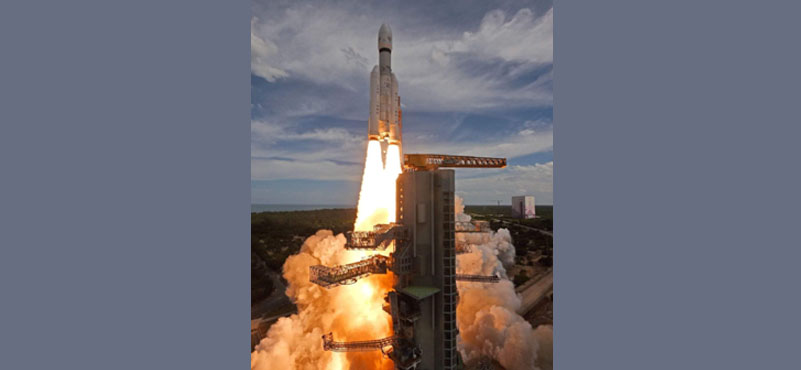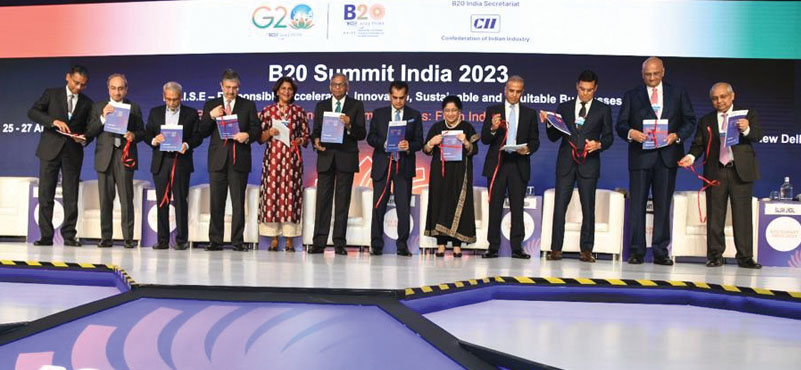Chandrayan 3 had 1.4 billion Indians literally over the moon. a tribute to isro and India’s scientist, an emerging force to reckon with
A Historic Milestone: India Lands on the Moon!
India’s space odyssey reached a new milestone with the touchdown of Vikram lander on the lunar South Pole. The success of the Chandrayaan-3 lunar mission has propelled India in an elite list of spacefaring nations to have soft-landed on the moon, and the first to have landed on its dark side. It is a significant moment in the history of space exploration, and a crucial step in humanity’s attempts to unravel the secrets of the Cosmos.
 Prime Minister Narendra Modi looked on from Johannesburg via teleconferencing as the 2148-kilogram Vikram lander module made its final course correction after a 41-day journey. The thrusters of Vikram lander fired in clockwork precision to align the lander with the Moon’s surface. The anticipation was palpable; Indian Space Research Organisation (ISRO)’s live telecast of the proceedings created a new YouTube streaming record with over 8 million viewers tuning in to watch history in the making. A few minutes later, scientists at the ISRO Telemetry, Tracking and Command Network (ISTRAC) centre erupted in thunderous applause as the lander glided onto the moon’s surface. S Somnath, Secretary, Department of Space, Government of India and Chairman, ISRO, confirmed the visuals. India was on the moon.
Prime Minister Narendra Modi looked on from Johannesburg via teleconferencing as the 2148-kilogram Vikram lander module made its final course correction after a 41-day journey. The thrusters of Vikram lander fired in clockwork precision to align the lander with the Moon’s surface. The anticipation was palpable; Indian Space Research Organisation (ISRO)’s live telecast of the proceedings created a new YouTube streaming record with over 8 million viewers tuning in to watch history in the making. A few minutes later, scientists at the ISRO Telemetry, Tracking and Command Network (ISTRAC) centre erupted in thunderous applause as the lander glided onto the moon’s surface. S Somnath, Secretary, Department of Space, Government of India and Chairman, ISRO, confirmed the visuals. India was on the moon.

PM Narendra Modi dedicated the success of the moon mission to the unwavering efforts of the scientists, suggesting that it was a victory for humanity. Foreign media prominently covered the proceedings, and congratulatory messages poured in from across the global scientific community. The PM flew in directly to the ISRO headquarters after attending the BRICS 2023 Summit in South Africa to congratulate the scientists, underlining how big a deal it is for the country and the government.
Why Landing on the Moon Matters?
Humanity’s fascination with the moon is not a new subject. The space race between the erstwhile Soviet Union and the United States was centred on the moon, culminating of sorts with the historic Apollo 11 mission. After successfully landing humans on the moon, it receded from the imaginations of the NASA scientists as they began exploring deeper space with countless successful missions like the Voyager-1 and Vogayer-2, and the Hubble Telescope.
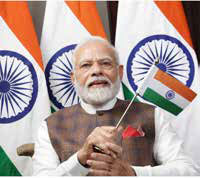
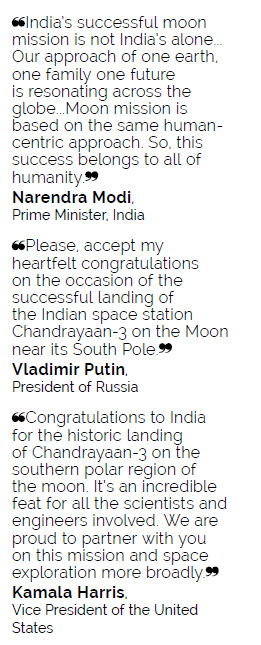
Truth be told, space technology is deeply intertwined with military capabilities, making it a non-negotiable for the much-coveted superpower status. Success in space missions is also a great way to stoke national pride, and mainstream science among the masses. However, a renewed interest in moon has much to do with the desire to understand its surface’s chemical composition and detect the presence of frozen ice.
The discovery of Hydrogen and Oxygen can help access drinking water and rocket fuel, and, ultimately, ensure permanent human inhabitation. These limited precious resources are key to further space exploration as the moon’s low gravity makes it an ideal launching pad for rockets. Countries with the first-mover advantage will have a head-start in establishing permanent human establishments, and gain a competitive advantage in future explorations.

A Long-awaited Dream Accomplished
More than six decades ago, Vikram Sarabhai, the founding father of the Indian space research organization, was asked whether a poor country like India really needed a space program. Rife with social and economic challenges, India had several conflicting priorities and spending money on space research was viewed as a wasteful expense. Vikram Sarabhai responded by saying that India had no intention of competing with technically advanced nations in space exploration. He, however, was convinced that if India was to play a meaningful role nationally, and in the community of nations, “we must be second to none in the application of advanced technologies to the real problems of man and society.” The success of the Chandrayaan-3 mission has vindicated Vikram Sarabhai’s dream of seeing India at the forefront of space exploration for the greater good of humanity.
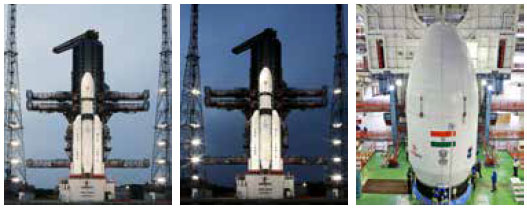
A History of Chandrayaan Missions
Chandrayaan-1 was launched in 2008, which confirmed the presence of water molecules on the lunar surface, forever altering our perception of the moon. This mission further underlined India’s desire to remain at the forefront of space exploration, paving the way for Chandrayaan-2, another audacious mission launched in 2019.
A software error disrupted communication between the lander and Bengaluru-based mission control after the Vikram lander reached an altitude of 2.1 kilometres above the Moon’s surface. Pragyaan rover crash-landed on the moon and was destroyed along with Vikram. However, the orbiter continues to send crucial information about the moon, enriching our lunar understanding.
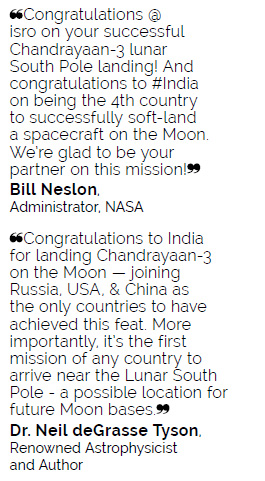
India Is Eyeing a Piece of the Space Economy
A McKinsey & Co. research reveals that the global space economy has grown to US$ 450 billion in 2023, and is likely to touch the $1 trillion mark by 2030. Meanwhile, it also suggests that the “number of active satellites involved in tracking data on climate change to processing credit card transactions—could triple within the next decade.” The USA already has robust private sector participation, especially since the rise of Elon Musk’s SpaceX.
On the contrary, Indian policymakers have traditionally viewed space as a strategic sector and have tightly controlled private sector access to it. However, the Modi government’s concerted efforts to open up the space sector for private participation signals a major shift in how policymakers now view the space sector as a major business opportunity.
Since 2020, when the space sector was thrown open to private participation, the Indian startup ecosystem has grown exponentially, driven by factors like the falling cost of access to space, thanks to ISRO’s cost-effective payload carrying and delivery capabilities. Plus, the increasing demand for space-based services, and the growing interest of private investors have contributed to the proliferation of Indian space-related startups. These startups are helping to drive innovation and affordability in the space industry, opening up new possibilities for space exploration and utilization.

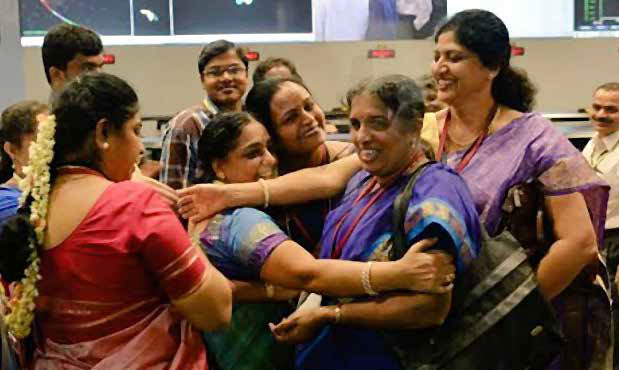
Data suggests that over 150 Indian startups are currently working on several cutting-edge technologies, including small satellite development and launch, space-based communication and imaging, space robotics and automation, in-orbit servicing and repair, and lunar and asteroid exploration.
Decoding the Artemis Accords
The Artemis Accords are agreements established by NASA, the United States’ space agency, to govern international cooperation in lunar exploration and the sustainable utilization of lunar resources. These accords aim to promote peaceful and responsible space exploration by outlining principles for transparency, interoperability, and sustainability.
encourage collaboration between spacefaring nations and private companies while respecting the Outer Space Treaty of 1967 and other relevant international space laws. The Artemis Accords are a crucial step toward establishing a framework for the peaceful and coordinated exploration of the Moon, and serve as a model for future cooperation in space endeavors. India is a signatory to the Artemis Accords.
Some key Indian startups and their areas of involvement are listed below:
- Pixxel: Pixxel is developing a constellation of small satellites to provide high-resolution Earth imagery.
- Agnikul Cosmos: Agnikul Cosmos is developing a small rocket to launch small satellites into orbit.
- Skyroot Aerospace: Skyroot Aerospace is developing a small rocket to make access to space more affordable.
- Astrome: Astrome is developing a space telescope to study exoplanets.
- Bellatrix Aerospace: Bellatrix Aerospace is developing a lunar rover to explore the Moon.
What’s Next?
Moon will remain the centre of space race 2.0 as the USA gears up to land the first woman and first person of colour on the Moon. With Artemis missions slated to be launched in 2025, NASA will probe the lunar surface further, and collaborate with other spacefaring nations and private entities to establish the first long-term presence on the Moon. The learnings from the Artemis mission will provide the groundwork for human-led exploration of Mars.
Several more moon missions are lined up in 2023 and 2024. The United States plans to launch Nova-C IM-1 in the Q3 of 2023, from a private Houston-based company, Intuitive Machines. Japan’s JAXA space agency, too, was planning to launch SLIM (Smart Lander for Investigating Moon) during the last month, which has now been postponed. Meanwhile, an Israeli firm – SpaceIL – will re-attempt landing in 2025 after a failed mission.
Russia and China have planned crewed flights and landings in 2029 and 2030, respectively. NASA and the European Space Agency (ESA) will soon commence work on a space station in lunar orbit in 2025. As the space race heats up, the moon will continue to court visitors, humans and probes, and will hopefully soon become our first home away from Earth, as humanity explores the possibilities of inter planetary travel.
ABOUT THE AUTHOR
Shashank Shekhar is a freelance journalist.

